18 Impressive Construction Statistics in Canada: 2025 Update
-
Jeff Weishaupt
- Last updated:

Note: This article’s statistics come from third-party sources and do not represent the opinions of this website.
The construction industry is a significant part of Canada’s economy. The industry involves building a wide range of residential, commercial, and industrial buildings. It is also responsible for building and maintaining the infrastructure of Canada.
From residential houses, hospitals, and shopping centers to motorways, highways, dams, and petrochemical plants, every building you see in the country comes under the construction industry.
Construction in Canada is both a service and production industry. But is the industry booming or declining? What is the current demand in the industry? How much does a construction worker make? What are the residential and non-residential statistics in Canada?
Below we discuss 18 construction statistics in Canada you should know this year. We will also understand different types of construction in Canada.
Click Below to Jump Ahead:
- General Construction Statistics in Canada
- Employment in the Construction Industry by Province
- Residential Construction
- Commercial Construction
- Industrial Construction
The 18 Construction Statistics in Canada
- Construction generates approximately $141 billion annually, making up 7.5% of the country’s GDP.
- There were over 1 million people employed in the construction industry in 2021.
- The construction industry in Canada is expected to reach CAD 190,860 million in 2022.
- The growth momentum of the construction industry in Canada is estimated to continue at a 5% CAGR from 2022 to 2026.
- The building permit value in Canada reached more than CAD 13.5 billion or US $10 billion in the second quarter of 2021.
- Investment in building construction in Canada declined to $20.9 billion in September 2022.
- The investment in building construction in Saskatchewan increased by 56.2% in September 2022.
- Ontario’s total construction employment is expected to increase by 3.4% between 2024–2028.
- Nova Scotia’s total construction employment is expected to increase by 2.6% between 2024–2028.
- Alberta’s total construction employment is expected to increase by 10.2% between 2024–2028.
- Saskatchewan’s total construction employment is expected to increase by 0.9% between 2024–2028.
- Prince Edward Island’s total construction employment is expected to decrease by 3.3% between 2024–2028.
- Investment in Canada’s residential construction increased by 4.3% in 2020.
- The value of residential construction in Canada increased by 14.8% in 2021.
- In 2021, Canada had almost 19 million square feet of commercial space under construction.
- The market size of the commercial building construction industry in Canada is estimated at around $36.5 billion in 2022 in terms of revenue.
- There was more than 36 million square feet of industrial space under construction in Canada in 2021.
- The Canadian industrial building construction industry’s market size will be almost $11.3 billion in 2022.

General Construction Statistics in Canada
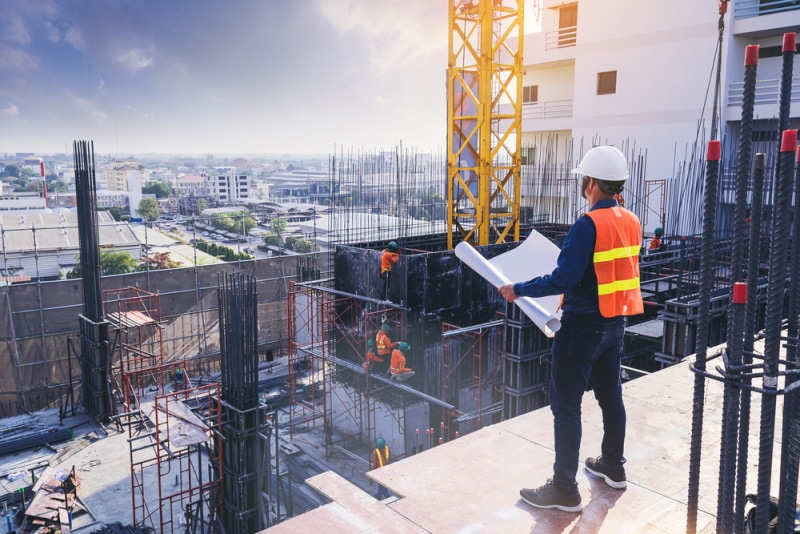
1. Construction generates approximately $141 billion annually, making up 7.5% of the country’s GDP.
(Canadian Construction Association)
The construction industry is like the backbone of Canada’s economy. It employs more than 1.4 million people and generates billions of dollars for the country every year.
2. There were over 1 million people employed in the construction industry in 2021.
(Statista)
More and more Canadians are now becoming a part of the country’s construction sector. In 1997, the total number of people employed in the construction industry was even less than half a million.
3. The construction industry in Canada is expected to reach CAD 190,860 million in 2022.
(Canadian Construction Industry Outlook 2022-2026)
The future is bright for Canada’s construction industry as it’s expected to grow at 8.8% in the coming years. In 2022, it is expected to reach almost CAD 191 million, and even higher as we move forward.
4. The growth momentum of the construction industry in Canada is estimated to continue at a 5% (compound annual growth rate) CAGR from 2022–2026.
(Canadian Construction Industry Outlook 2022-2026)
With a 5% CAGR momentum, the construction output in Canada is forecasted to hit CAD 232,243.2 million by 2026. That’s just getting bigger and bigger.
5. The building permit value in Canada reached more than CAD 13.5 billion or US$10 billion in the second quarter of 2021.
(Canadian Construction Industry Outlook 2022-2026)
Considering the rising interest in building construction in Canada, the building permit value was recorded as the highest in the country in the second quarter of 2021. With US $10 billion, the value is expected to increase by 2026.
6. Investment in building construction in Canada declined to $20.9 billion in September 2022.
(Statistics Canada)
Unfortunately, investments in Canada declined in 2022, with Quebec facing the highest decline of 3.4%. The investment in the residential sector decreased by 1.3% to $15.4 billion, while the non-residential sector investment increased by 1.6% to $5.4 billion as of September 2022.
7. The investment in building construction in Saskatchewan increased by 56.2% in September 2022.
(Government of Saskatchewan)
Compared to 2021, the investment in building construction in Saskatchewan increased by an impressive percentage in 2022. Currently, the province ranks the highest in terms of percentage change in Canada.
Employment in the Construction Industry by Province
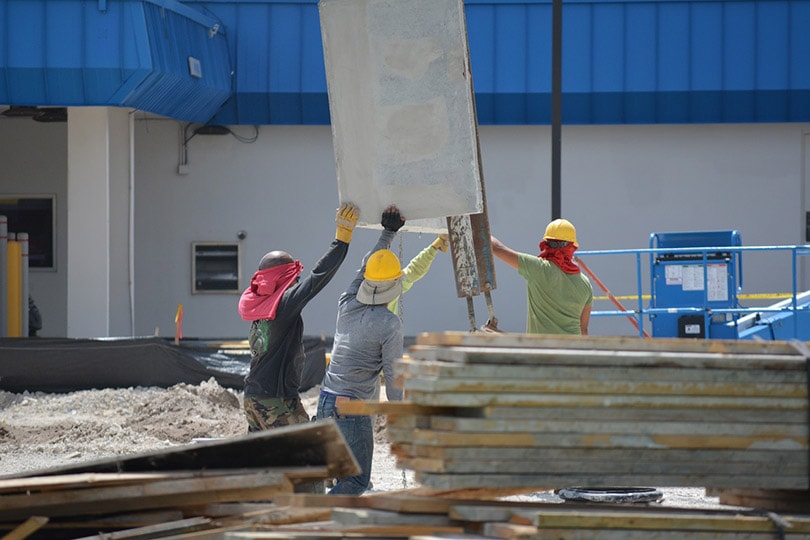
8. Ontario’s total construction employment is expected to increase by 3.4% between 2024–2028.
(Statista)
Ontario will see a major employment revolution in the construction industry, with employees increasing by 3.4% in the coming years. This percentage can also get higher than that, considering the rising new-home development in the province.
9. Nova Scotia’s total construction employment is expected to increase by 2.6% between 2024–2028.
(Statista)
Construction employment will also increase in Nova Scotia, similar to Ontario. That means more contribution to the country’s economy is expected from the province in the coming years.
10. Alberta’s total construction employment is expected to increase by 10.2% between 2024–2028.
(Statista)
Alberta is expected to have the highest increase in the coming years compared to all the provinces. The province will experience more than a 10% increase in total employment compared to the current stats.

11. Saskatchewan’s total construction employment is expected to increase by 0.9% between 2024–2028.
(Statista)
Surprisingly, the total employment opportunities in Saskatchewan’s construction industry will increase by just 0.9%. That’s a big shocker, considering the hefty investment made in the province’s building construction department in 2022.
12. Prince Edward Island’s total construction employment is expected to decrease by 3.3% between 2024–2028.
(Statista)
Prince Edward may have fewer employees in the construction industry in the coming years. The province’s total employment is expected to decrease by 3.3%.
Residential Construction
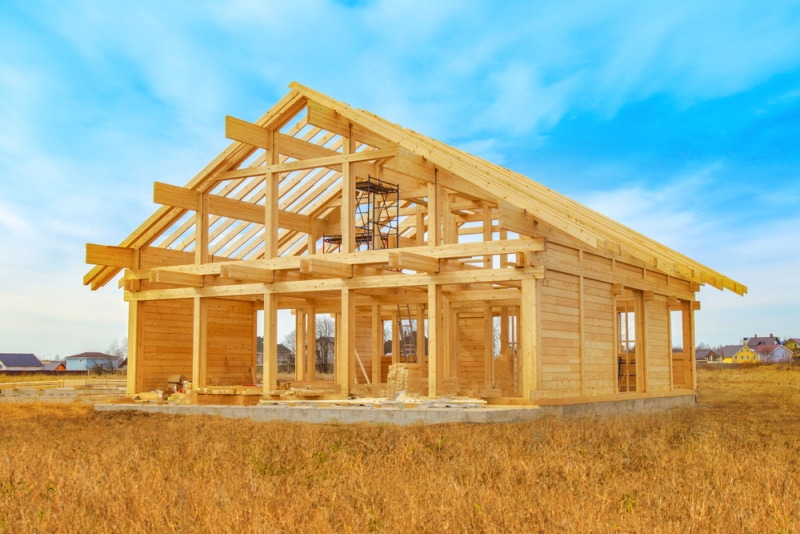
13. Investment in Canada’s residential construction increased by 4.3% in 2020.
(IBISWorld)
Despite a significant decrease in output, Canada’s residential construction industry had a significant investment in 2020. The total investment was increased by 4.3%. The country’s residential construction growth is expected to increase by 1.1% annually to $152.1 billion by 2023. That’s regardless of the economic uncertainty caused by the pandemic.
14. The value of residential construction in Canada increased by 14.8% in 2021.
(IBISWorld)
In 2022, the value of residential construction was 11.6% lower than in 2021. Even in 2023, the value of residential construction is expected to decrease by 6.2%. The primary reasons for this decline are rising interest rates and continued inflation.
Commercial Construction
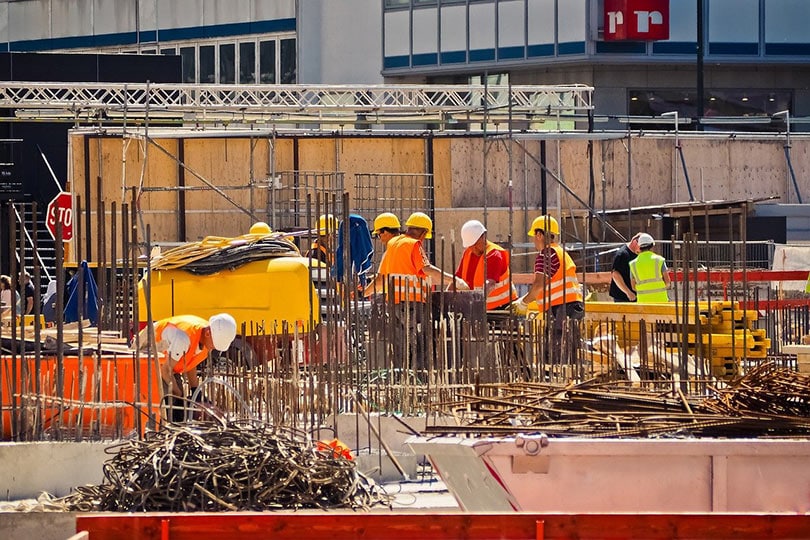
15. In 2021, Canada had almost 19 million square feet of commercial space under construction.
(Canadian Construction Industry Outlook 2022-2026)
Nineteen million square feet of land is a considerable amount of space, all allocated for commercial construction in the country in 2021. That’s enough space to cater to many new commercial projects in Canada in the coming years.
16. The market size of the commercial building construction industry in Canada is estimated at around $36.5 billion in 2022 in terms of revenue.
(IBISWorld)
The Canadian commercial building construction industry’s market size is estimated to increase by 5.9% in 2022. It is growing annually at 3.9% between 2017–2022 on average.
Industrial Construction
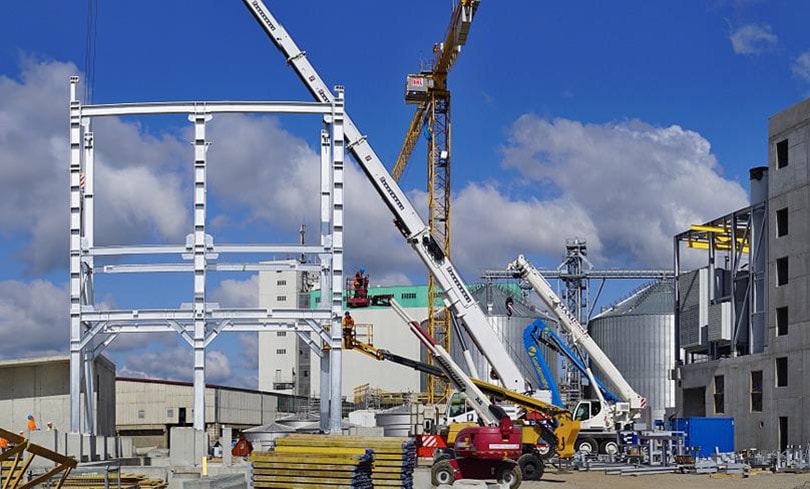
17. There was more than 36 million square feet of industrial space under construction in Canada in 2021.
(Canadian Construction Industry Outlook 2022-2026)
The space for industrial construction in Canada was higher than the available commercial area in 2021. It was 36 million square feet compared to commercial space, which was 19 million square feet.
18. The Canadian industrial building construction industry’s market size will be almost $11.3 billion in 2022.
(IBISWorld)
Canada’s industrial building construction market is estimated to grow by 9.5% in 2022. On average, the industry has expanded by 3.7% annually between 2017 and 2022.
What Are the 4 Major Types of Construction in Canada?
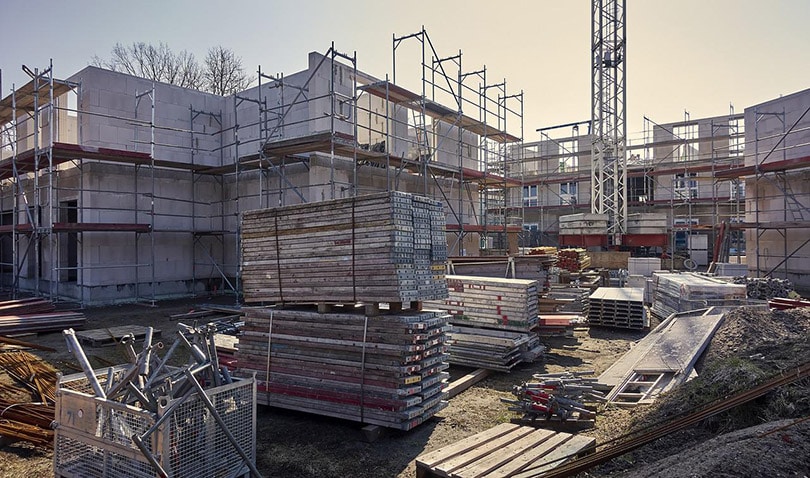
There are many types of construction in Canada. The four major categories include:
1. Residential Construction
Residential construction is the most prominent type of construction in Canada. It involves building, maintaining, renovating, and repairing houses. Residential construction typically includes the following structures:
- Apartments
- Homes
- Condos
- Nursing homes
- Garages
- Outbuildings (utility sheds)
Residential construction also includes installing and repairing water and electricity utilities in buildings.
2. Institutional and Commercial Construction
Institutional and commercial construction is similar to residential housing, except that it involves building, maintaining, and repairing commercial structures. This type of construction includes the following structures:
- Schools
- Sports arenas
- Shopping centers
- Hospitals
- Stadiums
- Retail stores
- Skyscrapers
Commercial construction for retail stores is mainly commissioned by a private party. However, the local or federal government pays and supervises the structures that remain open to the public, such as hospitals, shopping centers, etc.
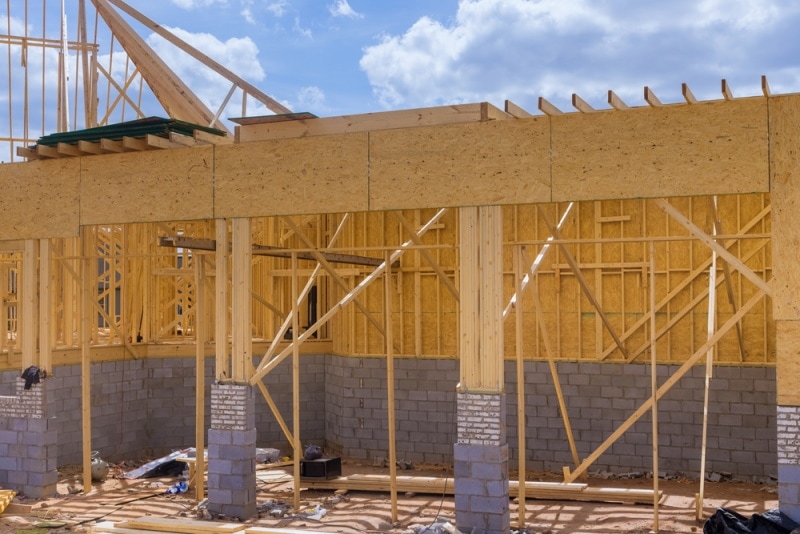
3. Specialized Industrial Construction
This construction type involves building structures requiring a high specialization level and technical skills for planning, constructing, and designing. Some examples of specialized industrial construction include:
- The chemical industry building oil refineries
- The power generation industry building different power plants, i.e., nuclear and hydroelectric power plants
Large industrial corporations or for-profit companies generally perform specialized industrial construction.
4. Infrastructure Construction
Infrastructure construction includes building and maintaining massive structures, such as:
- Railways
- Communications
- Roads
- Underpasses
- Bridges
- Tunnels
- Highways
- Transit systems
- Pipelines
- Drainage systems
The government and large private companies usually carry out this type of construction for the welfare of society or in the public’s interest.
Frequently Asked Questions About Construction in Canada
How Is the Construction Industry in Canada?
The construction industry is like the backbone of Canada’s economy. In 2022, the country had about 252 ongoing massive infrastructure projects valued at $25 million. With so many skyscrapers built over the past few years, the value of construction projects is expected to grow even more (Statista).
Is the Construction Industry Growing in Canada?
The construction industry in Canada is growing at 8.8% and is expected to reach CAD 190,860 million in 2022. This growth momentum is estimated to continue at 5% CAGR from 2022–2026 (Canadian Construction Industry Outlook 2022–2026).
Which Province in Canada Has the Most Construction?
In 2021, Ontario topped the list of new home construction in Canada, with over 20,723 units built in the province.
What Is the Biggest Construction Company in Canada?
PCL Construction is the biggest construction company in Canada in terms of revenue. It has an average revenue of $7.6 billion. PCL is followed by EllisDon Corporation with $4.9 billion in revenue, Aecon Group Incorporated with $3.9 billion in revenue, and Graham Construction with $3.8 billion in revenue.
Conclusion
The construction industry in Canada is growing, offering millions of employment opportunities every year. With a little decline during the pandemic days, the industry has significantly bounced back. Experts expect Canada’s construction industry to grow at 5% CAGR from 2022 to 2026, which is impressive.
So, if you want to start your career in the construction industry in Canada, it is high time you do so and start earning well. Thankfully, the future seems promising!
- Canadian Construction Association
- Statista
- Canadian Construction Industry Outlook 2022-2026
- Canadian Construction Industry Outlook 2022-2026
- Canadian Construction Industry Outlook 2022-2026
- Statistics Canada
- Saskatchewan Government
- Statista
- Statista
- Statista
- Statista
- Statista
- IBIS World
- IBIS World
- Canadian Construction Industry Outlook 2022-2026
- IBIS World
- Canadian Construction Industry Outlook 2022-2026
- IBIS World
- Statista
- CA Talent
Featured Image Credit: bridgesward, Pixabay
Contents

